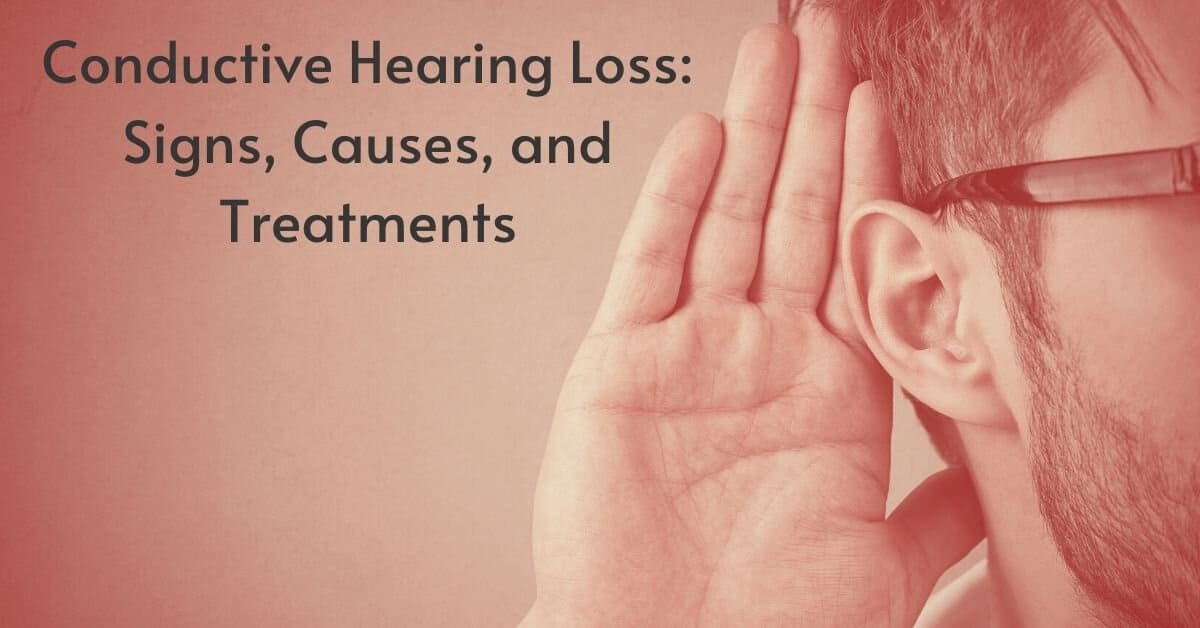Of the two main types of hearing loss, we hear mostly about sensorineural hearing loss. This type includes most noise-induced hearing loss and age-related hearing loss, both of which come on so slowly that a person doesn’t usually realize they’re happening. Sensorineural hearing loss is caused by damage to parts of the inner ear. This includes the cochlea, where sound is converted from mechanical into electrical energy, and the auditory nerve, which transports the electrical energy from the cochlea to the brain.
Conductive Hearing Loss
The other main type of hearing loss is conductive. This is what we call any hearing loss that occurs as a result of anomalies in the outer or middle ear, where sound is prepared to be delivered to the cochlea. The outer ear includes the parts of the ear that are visible from the outside of the body, including the ear canal and the eardrum, and the middle ear includes the parts of the ear from the inside of the eardrum to the entrance to the cochlea (aptly called the vestibule). The hub of the middle ear is a hollow atrium called the tympanic cavity, which contains the three smallest bones in the body: the malleus, the incus and the stapes. The auditory tube (formerly called the Eustachian tube) connects the tympanic cavity to the throat, to keep pressure inside the ear equal to that outside the body.
Conductive hearing loss, unless a person is born with it, usually comes on quickly, sometimes overnight. While it can be caused by trauma or incredibly loud sound, there are a number of medical conditions that can bring on conductive hearing loss, as well. The good news is that most types of conductive hearing loss are temporary or curable, and all are treatable.
Infections
The childhood ear infection is the most common reason for visits to the pediatrician. Also called a middle ear infection (or otitis media), it is caused by an upper respiratory tract infection traveling to the tympanic cavity via the auditory tube. While adults can get middle ear infections as well, they are far more common in children because of the horizontal orientation of children’s auditory tubes. (As we grow, our auditory tubes become more diagonal, making it more difficult for bacteria to travel up to our ears.) A middle ear infection is painful, and if fluid builds up in the tympanic cavity, the pressure can be felt as well. This fluid also restricts the movement of the three bones found here, which is what causes hearing loss.
Swimmer’s ear is an infection of the ear canal. It is usually caused by contact with moisture or the use of cotton swabs. It causes pain, and if inflammation becomes severe enough, it can constrict the ear canal, causing hearing loss.
With both types of infections, the hearing loss will subside when the infection subsides in most cases. Sometimes middle ear infections can put so much pressure on the inside of the ear drum that it perforates or ruptures. In this case, and in some cases of chronic middle ear infections, scar tissue can develop on the eardrum that creates permanent hearing loss. This can be treated with hearing aids.
Other Outer Ear Problems
Beyond infections, conductive hearing loss can result from other disturbances in the outer ear. Earwax or foreign material can build up and block sound from traveling to the eardrum. Once removed, hearing will return to normal.
Some people who swim frequently in cold water might experience bony lesions in the ear canal. These are not dangerous but can block the passage of sound, and require surgery to remove. Similarly, aural atresia causes blockage of the ear canal as a result of abnormal growth, but it is a form of birth defect. It can also be corrected with surgery.
Other Middle Ear Problems
Problems in the middle ear can include abnormal growths of bone or skin tissue. These don’t always cause hearing loss, but they can when they interfere with the free vibration of the eardrum; or the malleus, incus, and/or stapes. These three bones might also grow fused together, or they can be broken by trauma or extraordinarily loud sound. Sometimes due to pressure anomalies, the eardrum can collapse into the middle ear. Some of these cases can be corrected with surgery, depending on their severity.
If you have pain in your ears or suspect that you might have conductive hearing loss, consult a medical professional immediately.

